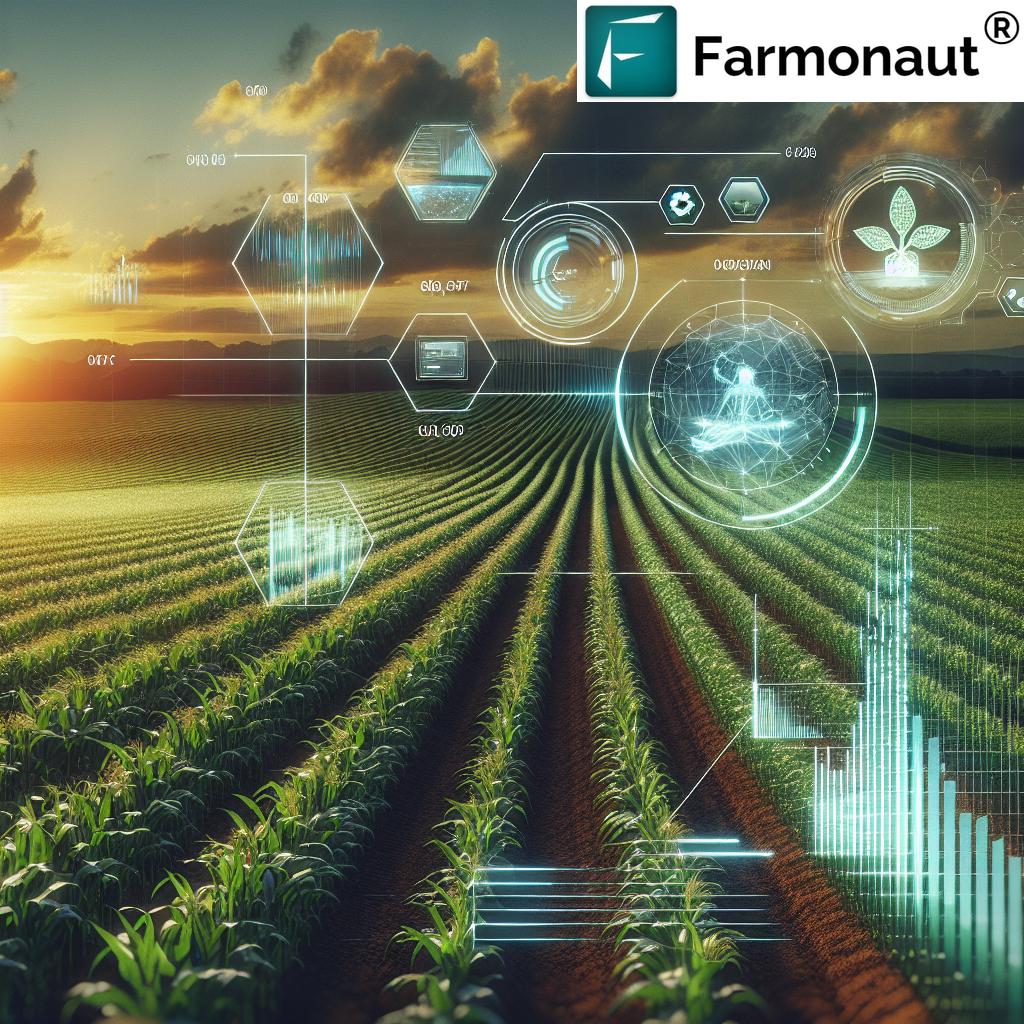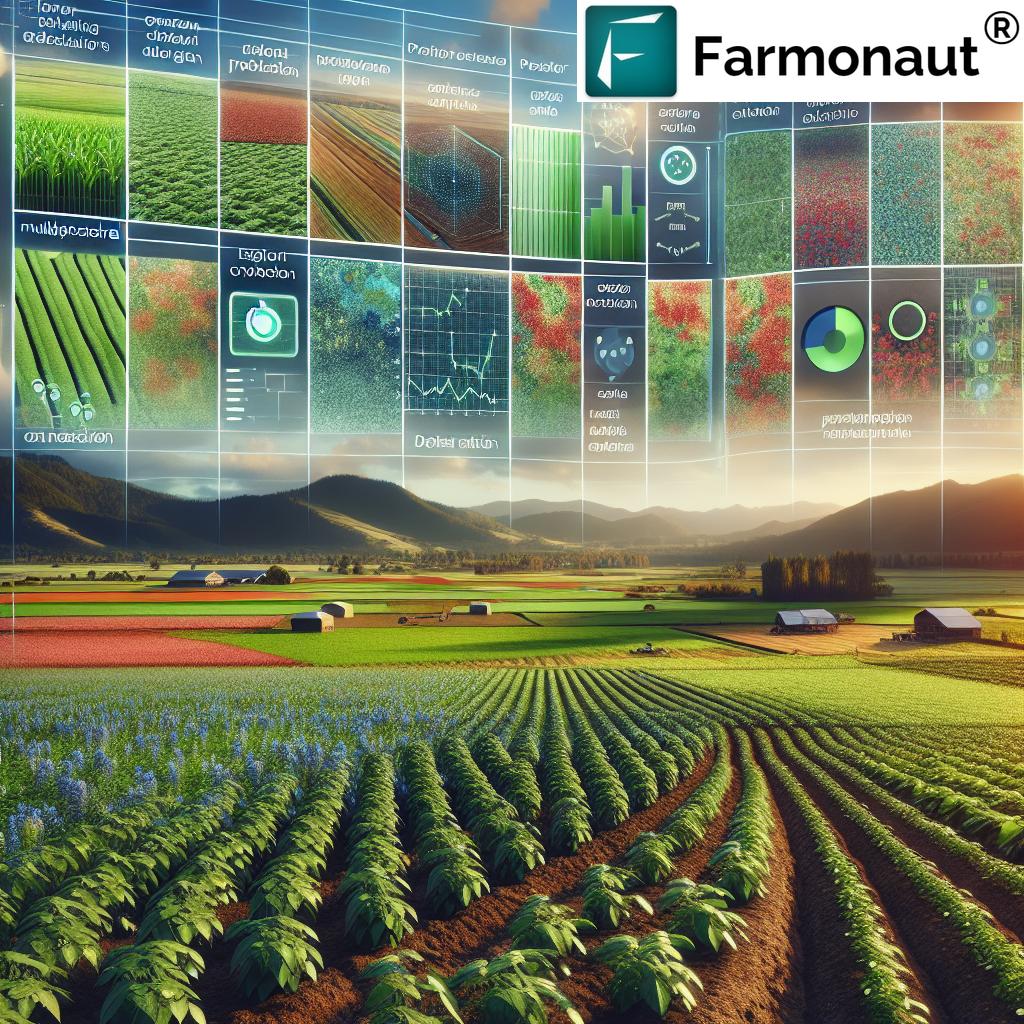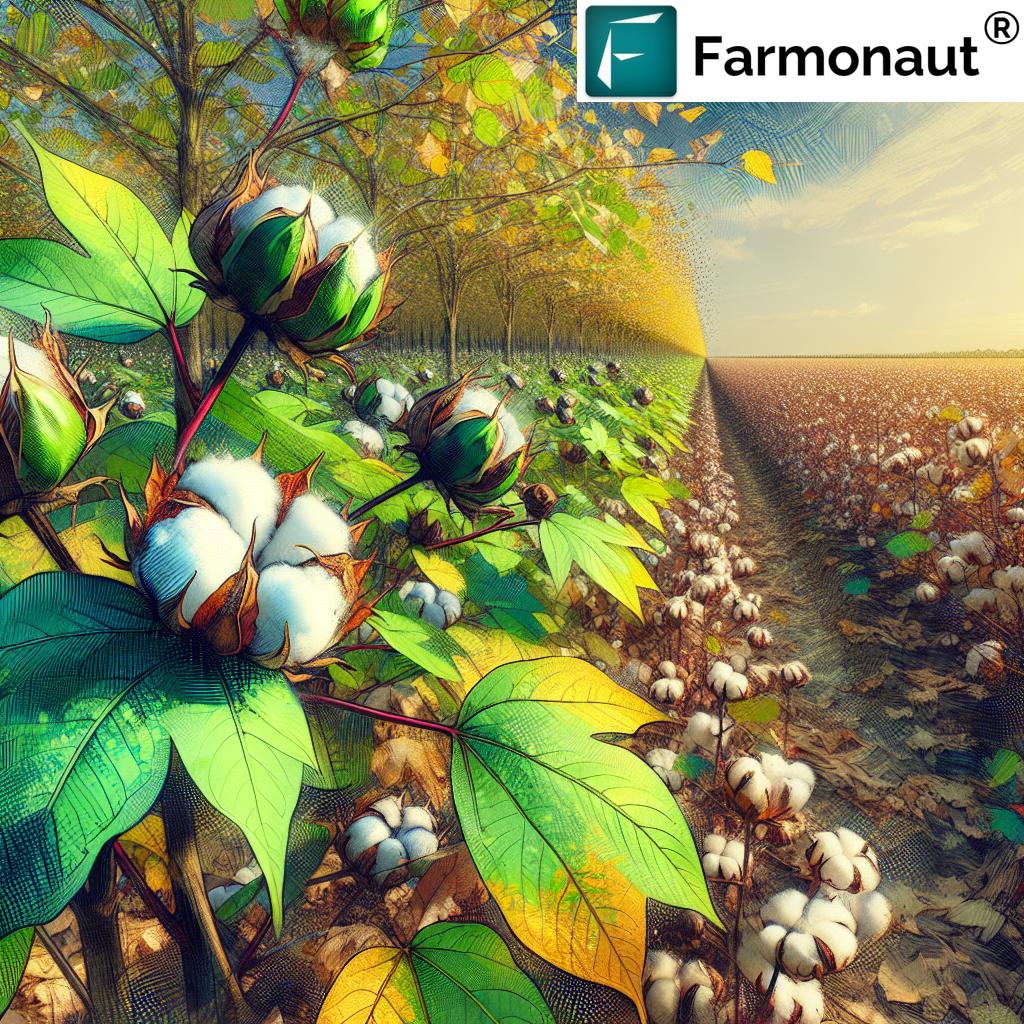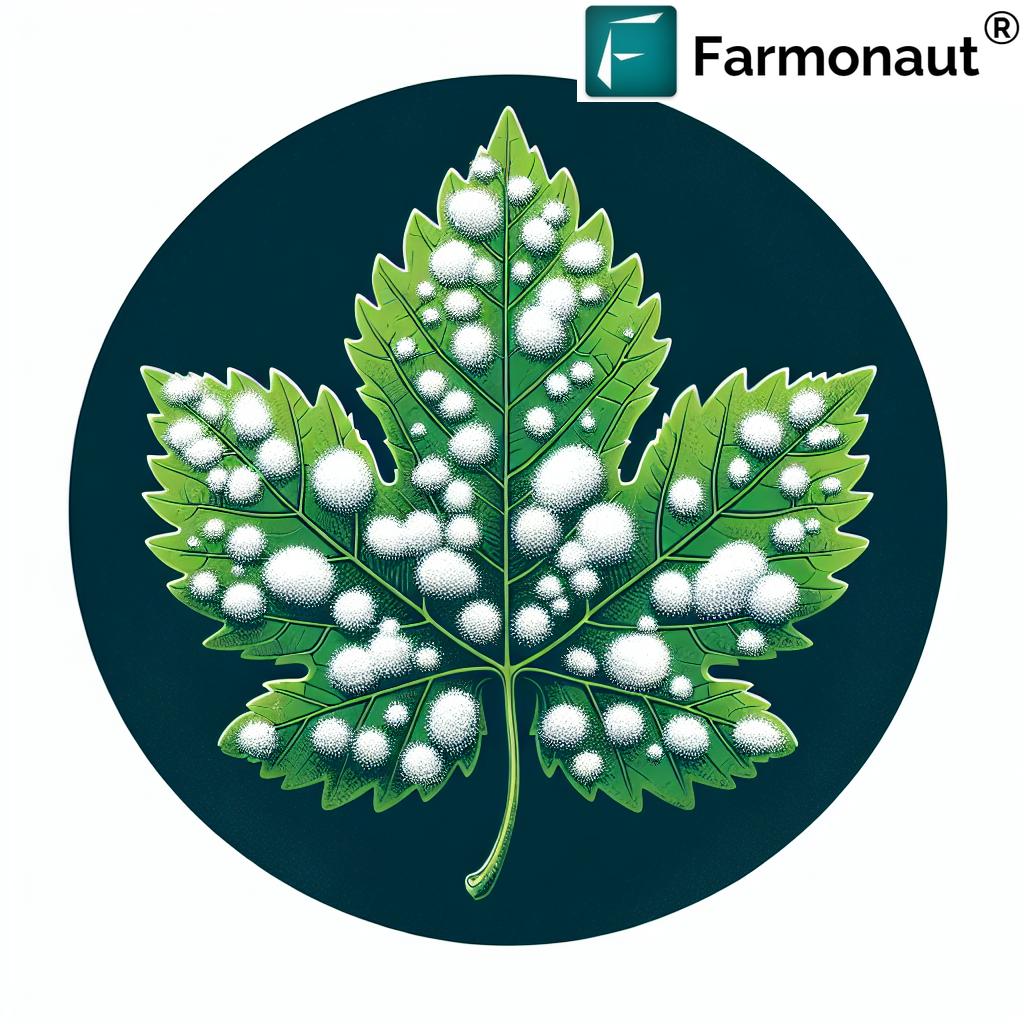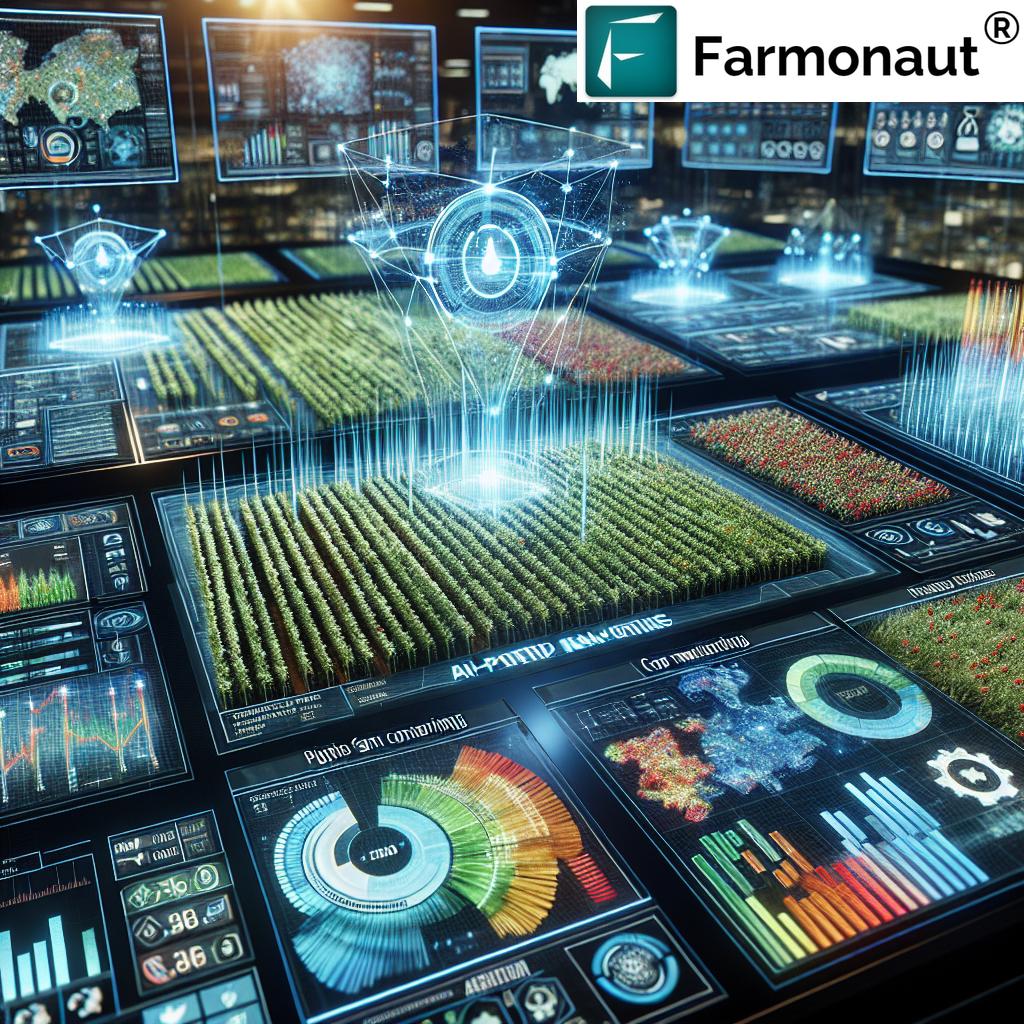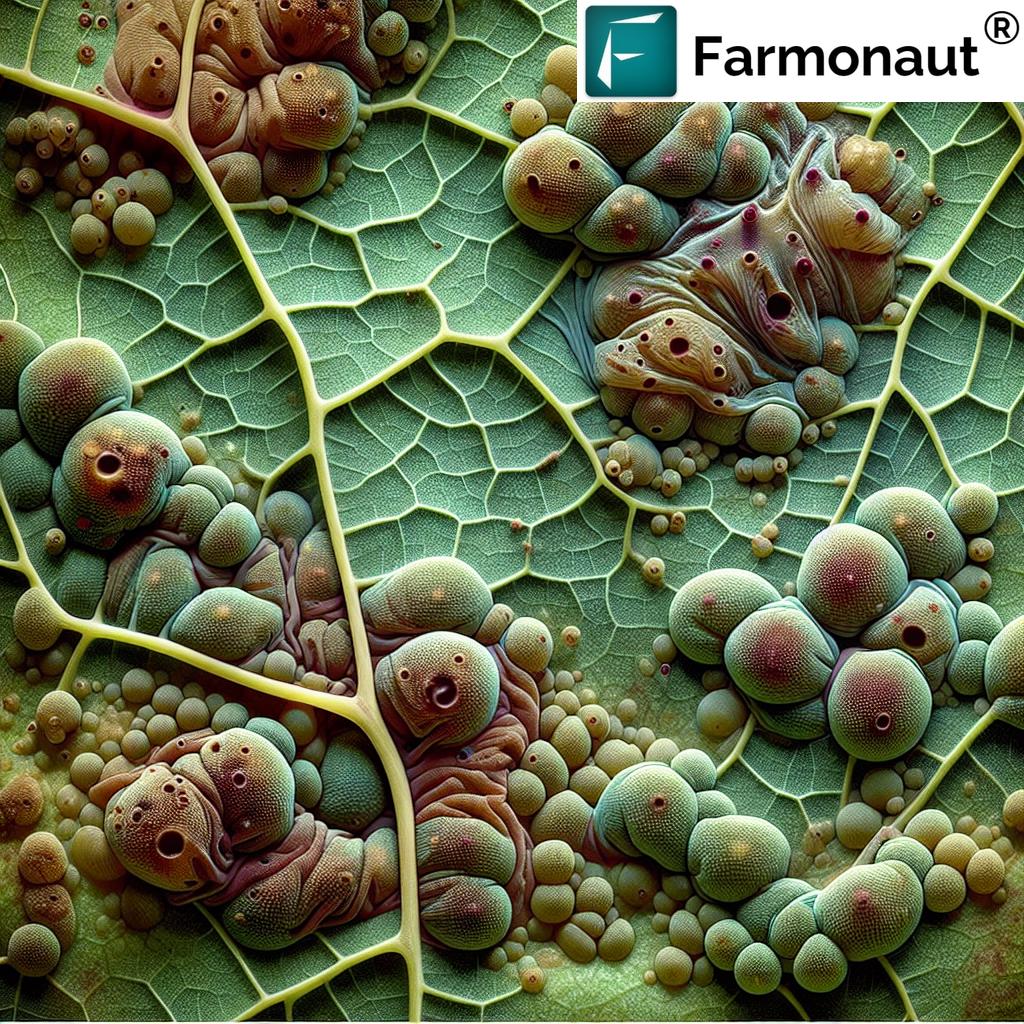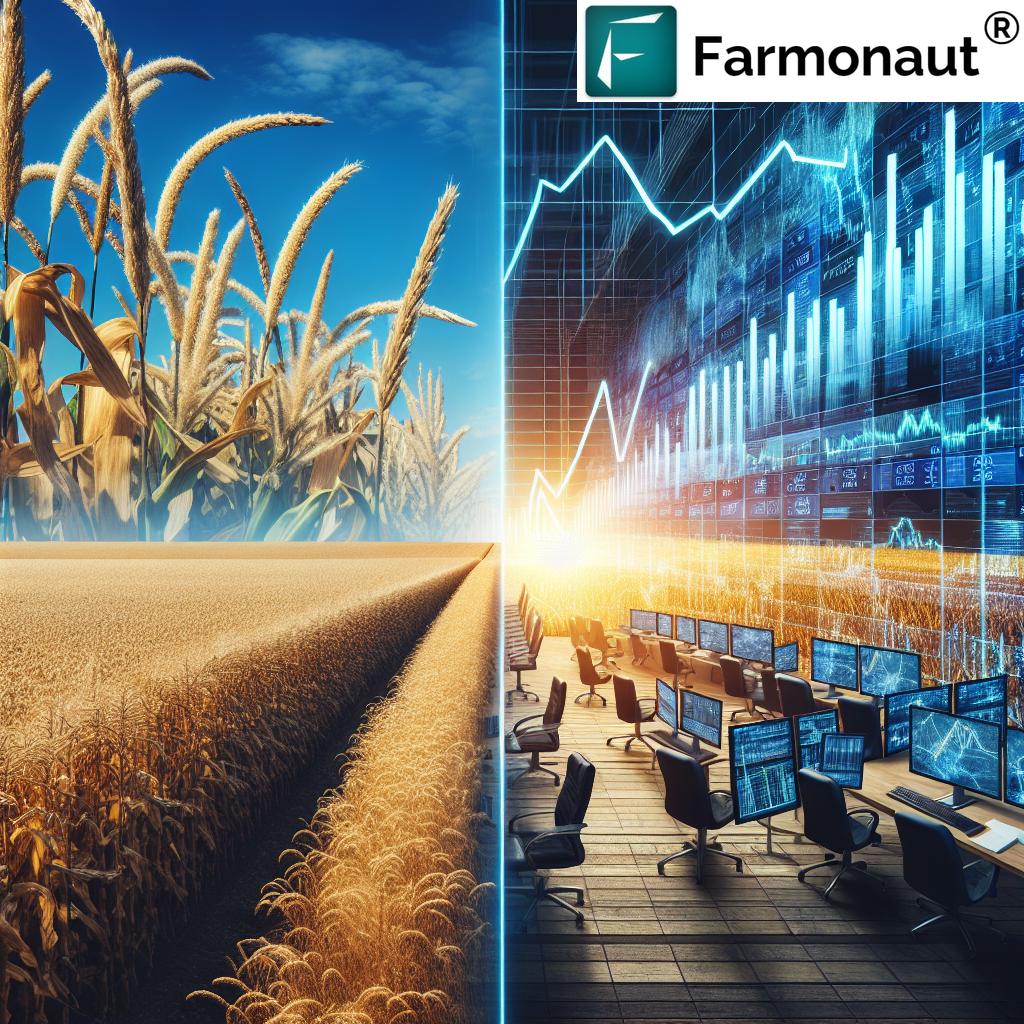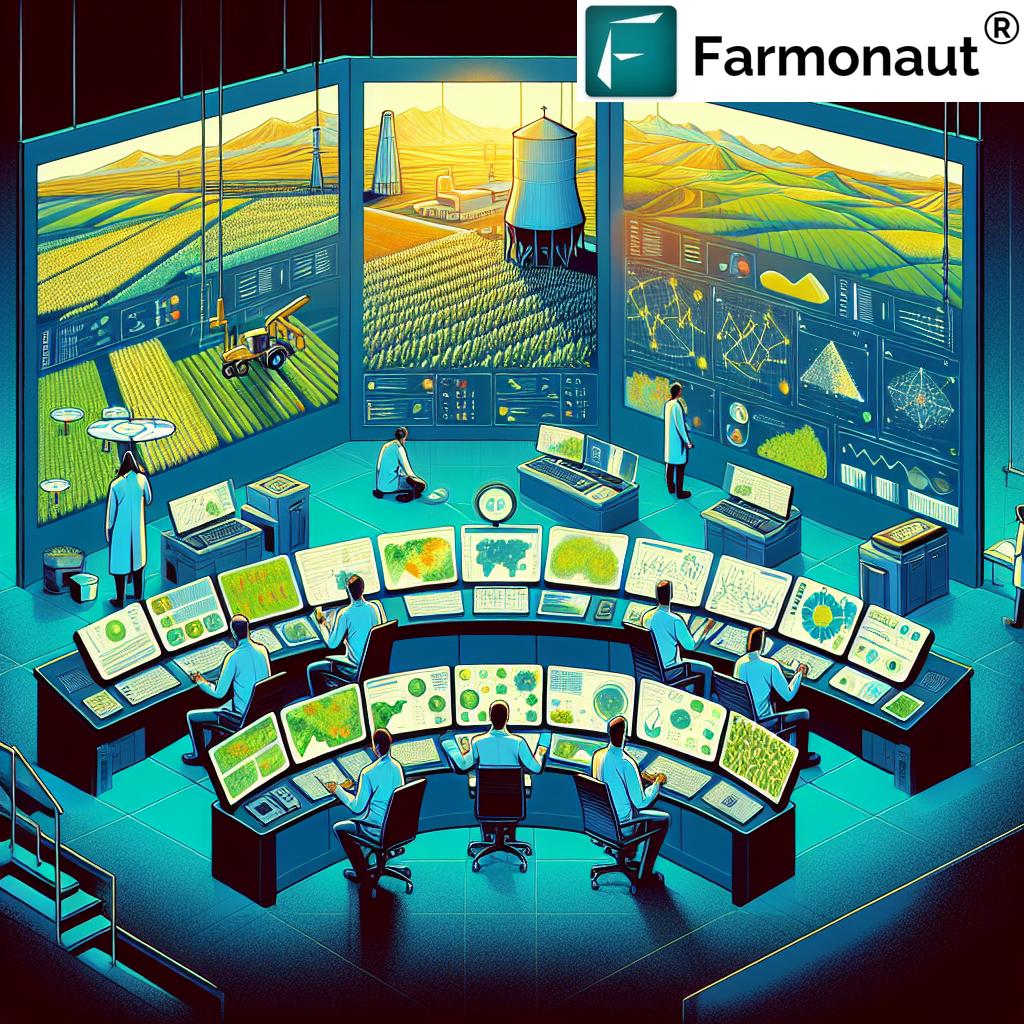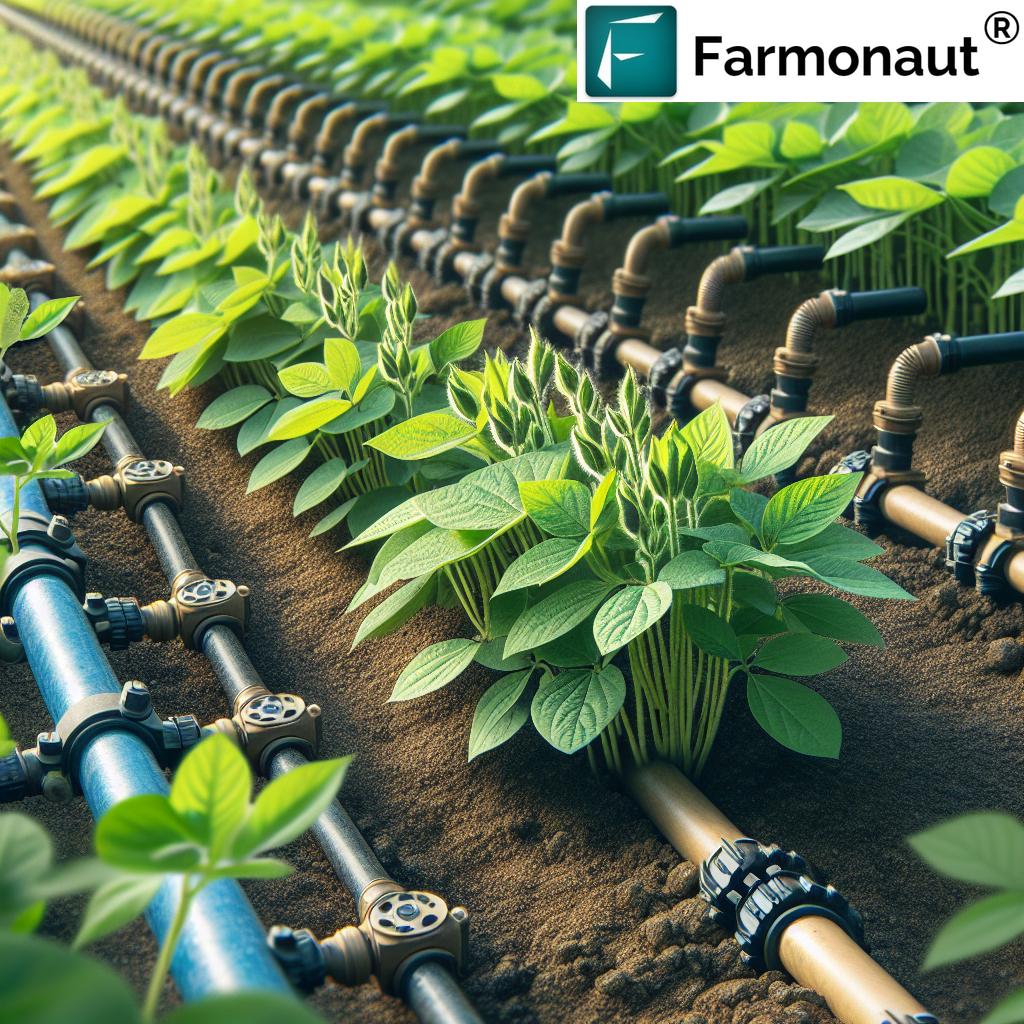Crop Growth Monitoring System: 7 Shocking Farm Upgrades
Crop growth monitoring is revolutionizing modern agriculture. With the integration of remote sensing, data-driven insights, IoT sensors, and AI technologies, farmers are now empowered to make informed decisions that directly boost yields, optimize resources, and implement sustainable farming practices. In this comprehensive guide, we’ll explore the transformative impact of crop growth monitoring—shining a spotlight on 7 truly shocking farm upgrades made possible by the latest technology.
Whether you’re an individual grower, part of a large agribusiness, or a policymaker looking for sustainable farming solutions, understanding these innovations is essential. From remote satellite imaging to blockchain-based traceability, these systems are rapidly changing how agricultural operations function at every level.
What is Crop Growth Monitoring?
Crop growth monitoring refers to the process of continuously observing and analyzing crops’ development and health throughout their lifecycle. By combining advanced tools such as satellite imagery, IoT sensors, big data analytics, and artificial intelligence (AI), we can obtain real-time insights about soil conditions, plant stress, environmental factors, and resource usage. These systems are fundamentally reshaping the way we practice precision agriculture, making farms more productive, sustainable, and resilient to climate change.
- Optimizing yields by ensuring crops get exactly what they need, when they need it
- Reducing waste and conserving water, fertilizers, and pesticides efficiently
- Enabling data-driven decisions that improve profitability and sustainability
Let’s dive into how these technologies work and the innovations they bring to modern farming.
7 Shocking Farm Upgrades Driven by Crop Growth Monitoring Systems
-
1. Satellite-Based Remote Sensing in Agriculture
Remote sensing—using satellites and drones equipped with specialized sensors—enables large-scale crop assessment by capturing multispectral images from a distance. By precisely analyzing plant vigor, growth anomalies, and potential stress areas, we identify zones requiring immediate attention and improve farm management at scale.
This upgrade drastically improves our capability to monitor vast fields with extraordinary accuracy and frequency. -
2. IoT Sensors for Farming: Real-time Soil and Crop Data
IoT sensors deployed across fields gather ground-level soil moisture, temperature, humidity, and nutrient data. These devices feed granular, real-time data into farm management platforms so we can implement targeted irrigation, precise fertilization, and early pest control strategies. This level of comprehensive soil health monitoring enables sustainable and efficient resource use.
-
3. AI in Crop Management and Big Data
Artificial intelligence (AI) and machine learning algorithms analyze the vast data streams from remote sensing and IoT sensors. By spotting patterns and trends, these systems detect crop diseases early, predict yields, and deliver tailored recommendations for optimal results. The integration of AI in crop management transforms overwhelming data into actionable insights, boosting efficiency.
-
4. Nanotechnology for Ultra-Precise Crop and Soil Health Monitoring
Next-generation nanosensors enable us to monitor soil health and plant condition down to the molecular level. These advanced tools detect nutrient deficiencies, disease agents, or soil contaminants earlier than ever—allowing for timely, surgical interventions that protect crop yields and promote sustainability.
-
5. Automated and Precision Irrigation Systems
By leveraging real-time soil moisture data, we can automate irrigation systems to deliver the right amount of water to the right place at the right time. This ensures crops receive optimal hydration, boosts plant health, and dramatically reduces water waste—a key upgrade in regions facing drought or water scarcity.
-
6. Blockchain for Product Traceability and Trust
Integrating blockchain technology into crop growth monitoring creates secure, immutable records for every stage in the crop supply chain. This transparent system enhances food safety, traceability, and consumer trust by ensuring verified data integrity from seed to supermarket shelf.
Learn more about our blockchain-based product traceability solutions. -
7. Carbon Footprinting and Environmental Impact Analysis
Sustainable farming practices are more critical than ever. Using precise monitoring and digital tools, we now track on-farm carbon emissions, identify high-impact activities, and map out strategies for reducing the overall carbon footprint. This upgrade supports environmental compliance and future-proofs our agricultural operations.
Discover how you can measure and manage farm carbon footprint with Farmonaut.
Core Technologies in Crop Growth Monitoring Systems
Remote Sensing in Agriculture
Remote sensing involves capturing crop and soil data from a distance using satellites and drones equipped with specialized sensors.
Effective remote sensing provides:
- Large-area coverage for even the most expansive agricultural fields
- High-frequency assessments that reveal real-time changes in crop health
- Multispectral imaging to detect subtle variations in plant vigor and soil moisture levels (example: NDVI & vegetation indices)
- Early warning for stress factors such as drought, disease, or nutrient deficiency
IoT Sensors for Farming: The Pulse of the Field
Internet of Things (IoT) sensors are now integral in modern crop systems. These precision devices, deployed directly in the field, collect:
- Soil moisture, temperature, and humidity data at granular levels
- Nutrient content and pH levels for precise fertilization
- Pest and disease indicators facilitating early detection and control
Using these insights, we can make informed, precise, and timely decisions on everything from soil management to resource allocation.
Want to know how you can automate and simplify your farm management? Try our large-scale farm management solutions for advanced monitoring.
AI in Crop Management, Machine Learning, and Data Analysis
By harnessing artificial intelligence and machine learning, we process enormous amounts of crop, soil, and environmental data. AI systems analyze trends, predict outcomes, and identify anomalies or risks before they escalate.
Key examples of AI impact in agriculture include:
- Tailored advisory services—like real-time recommendations for irrigation, nutrient management, and pest control
- Automated yield prediction in agriculture for smarter planning and market strategy
- Integrated pest and disease detection to minimize crop loss and reduce chemical use
Experience AI-driven advisory with Jeevn AI Advisory System on the Farmonaut platform.
Nanotechnology: Next-Level Crop Growth Monitoring
Nanotechnology introduces nanosensors that monitor soil health, detect pathogens, and assess plant conditions at the molecular level. Their comprehensive monitoring can identify issues invisible to the naked eye and traditional sensors:
- Detection of micronutrient imbalances affecting plant growth and yield
- Early signs of soil-borne diseases for timely intervention
- Ensuring efficient use of fertilizers and pesticides
Combined with remote sensing and IoT data, nanotechnology is a powerful tool for optimizing input usage and strengthening sustainable farming practices.
Blockchain: Ensuring Data Traceability and Security
Blockchain integration in agriculture provides transparency, security, and traceability for the entire supply chain. Every critical event—from planting to harvest, and delivery—is recorded on a secure, tamper-proof ledger. This minimizes fraud, ensures fair payments, and fosters trust among all stakeholders in agri-business.
For trusted data and supply chain visibility, explore Farmonaut’s blockchain-based traceability solutions.
Key Applications of Crop Growth Monitoring Systems
Precision Irrigation for Resource Conservation
Using real-time moisture data from sensors and satellite images, we apply just the right amount of water, precisely when and where crops need it. This method:
- Drastically reduces water waste
- Improves plant health during critical growth stages
- Protects yields, especially in drought-prone regions
Nutrient Management and Fertilization Strategies
Real-time soil health monitoring informs us of nutrient deficiencies and soil conditions. This data lets us customize fertilizer applications by field, zone, or even crop row—boosting efficiency and minimizing environmental impact.
Integrated Pest and Disease Detection
Early warning systems, powered by AI, IoT sensors, and remote sensing, flag potential pest infestations and crop diseases before they escalate. This empowers farmers to take targeted action, saving crops while cutting down on broad-spectrum pesticide use.
Learn about cutting-edge integrated pest and disease detection systems.
Yield Prediction in Agriculture and Resource Planning
By analyzing soil, weather, and crop health data, smart analytics forecast future yields with high accuracy. This vital insight:
- Informs inventory and market decisions
- Guides input planning for the next season
- Supports financial institutions with data-driven crop loan and insurance verification
Fleet and Resource Management
Advanced platforms provide fleet tracking and resource management for agribusinesses, helping to reduce operational costs and enhance farm logistics. GPS-enabled tracking and satellite-based monitoring allow for efficient vehicle use and safe, effective management of farm machinery at all levels.
Optimize your logistics with Farmonaut’s fleet management tools.
Climate and Carbon Footprinting for Sustainability
Monitoring emissions is now a core aspect of sustainable farming practices. Precise data on carbon output enables us to:
- Understand the environmental impact of farming operations
- Implement strategies for reducing greenhouse gas emissions
- Meet regulatory requirements and participate in sustainability programs
Explore this further at Farmonaut’s carbon footprinting solutions.
Benefits of Implementing Crop Growth Monitoring Systems
- Increased Efficiency: Automated data collection, analysis, and alerts free us from repetitive tasks and streamline farm operations.
- Resource Conservation: Optimizing use of water, fertilizers, and pesticides means less waste and lower costs.
- Sustainability: Minimizing inputs and emissions improves environmental outcomes and supports eco-friendly farming.
- Data-Driven Decisions: With real-time, accurate insights, we make informed choices that maximize crop yields and profitability.
- Scalability: These systems suit everyone—from smallholders to large agribusinesses—and grow with your needs.
- Integrated Solutions: Modern platforms bring crop, soil, weather, and fleet management into one seamless system, reducing complexity and boosting productivity.
Feature Comparison Table: Crop Monitoring Tech Impact
| Upgrade Type | Functionality | Estimated Yield Improvement (%) | Estimated Resource Efficiency (% Reduction Water/Fertilizer) |
Sustainability Impact (Carbon Footprint Reduction [%]) |
|---|---|---|---|---|
| Satellite Remote Sensing | Large-scale crop & soil health assessment via multispectral imaging | 15-20% | 10-18% | 10-15% |
| IoT Sensors for Farming | Field-level real-time data collection (moisture, temp, nutrient) | 10-17% | 15-25% | 10-15% |
| Artificial Intelligence & Machine Learning | Pattern analysis, tailored recommendations, yield prediction | 12-19% | 10-14% | 12-18% |
| Nanotechnology Sensors | Molecular-level monitoring, early disease & nutrient detection | 8-15% | 12-19% | 8-12% |
| Automated Irrigation | Precision, need-based water delivery | 9-14% | 22-37% | 10-14% |
| Blockchain Traceability | Secure, transparent supply chain tracking and verification | 5-9% | 3-6% | 8-12% |
| Fleet & Resource Management | Optimized logistics, machinery usage, and fuel efficiency | 4-8% | 5-11% | 5-9% |
| Carbon Footprinting | Monitor & reduce greenhouse gas outputs on farm | – | – | 15-25% |
Challenges and Considerations in Adopting New Monitoring Systems
- Data Management: Integrating diverse sources such as satellite images, IoT sensors, and field reports requires robust storage and processing systems.
- Cost of Implementation: Advanced crop growth monitoring setups may have significant upfront costs, although solutions like Farmonaut’s affordable subscription model help lower barriers to entry.
- Technical Knowledge: Training and awareness are necessary for farmers and staff to fully leverage digital tools.
- Data Privacy: Protection of sensitive agricultural data is crucial for trust and legal compliance.
- Connectivity: Reliable internet access is necessary for real-time data transmission, especially in remote or rural areas.
- Field Variability: Sites with highly variable microclimates or soil conditions may need more sensors or specialized setup.
Future Trends in Crop Growth Monitoring and Sustainable Farming
- Wider Adoption of IoT Devices: Affordable and durable field sensors will allow even more farmers to access real-time farm data analysis—democratizing precision agriculture technologies worldwide.
- Advanced AI and Machine Learning: Smarter algorithms will offer even greater accuracy, automate more farm management tasks, and personalize recommendations to each field and farmer.
- Integration with Blockchain: Blockchain will become standard for product traceability, enhancing transparency, compliance, and consumer confidence.
- Sustainability Focus: Crop growth monitoring systems will further embed sustainability metrics such as water usage, soil health, and carbon emissions in routine operations.
- API Ecosystems: Platforms like Farmonaut offer powerful APIs and developer documentation to integrate satellite and weather data into any agritech solution.
Farmonaut: Making Precision Agriculture Accessible
At Farmonaut, we’re dedicated to democratizing access to precision agriculture technologies. We provide a comprehensive, satellite-based platform—available via web, Android, and iOS apps as well as API—delivering advanced farm management tools right to your fingertips.
- Satellite-Based Crop Health Monitoring: Obtain detailed crop health, NDVI, and soil moisture data for informed decisions on every acre.
- AI-Based Advisory: Get expert, personalized, and real-time crop management recommendations from our Jeevn AI system.
- Blockchain Traceability: Secure farm-to-fork traceability with transparent supply chains to ensure food safety and trust.
See how it works: Traceability Product Solutions - Resource & Fleet Management: Optimize people, machinery, and inputs with powerful fleet management tools.
- Carbon Footprint Tracking: Drive sustainability with emission analytics & strategic environmental planning. Discover Carbon Footprinting Tools.
- Crop Loan Verification: Boost farmer access to credit and reduce fraud risks for financial institutions using satellite-based verification. See: Crop Loan and Insurance Platform.
Our business model is subscription-based, making advanced crop growth monitoring affordable and scalable for everyone—from individual farmers to large agribusinesses and government agencies.
Platforms are available as a mobile app, web app, and through powerful APIs for integration into your systems and dashboards.
→ Access advanced monitoring, traceability, carbon accounting, and more from any device, anywhere.
Get Started with Cutting-Edge Crop Monitoring Today
Want to explore further? Use our API to bring advanced, actionable satellite and weather data directly into your own tools and dashboards.
Farmonaut Satellite & Weather Data API |
API Developer Documentation
Farmonaut empowers everyone—from family farmers to global agribusinesses—to thrive in the new era of data-driven, sustainable farming.
Frequently Asked Questions
-
What is crop growth monitoring and why is it important?
Crop growth monitoring is the continuous observation and analysis of crop health and field conditions using remote sensing, IoT sensors, and data analytics. It enables us to optimize yields, reduce input costs, and implement sustainable agricultural practices through precise, real-time insights.
-
How do IoT sensors benefit farming?
IoT sensors collect granular, real-time data about soil moisture, temperature, humidity, and nutrient levels. This data enables precision irrigation, fertilization, and early pest detection, ultimately increasing efficiency and conserving resources.
-
What advantages does AI bring to crop management?
AI in crop management automates the analysis of vast data from sensors and satellite images, offering tailored recommendations, accurate yield predictions, and early warnings for diseases.
-
How does Farmonaut differ from other crop monitoring systems?
Farmonaut stands out by leveraging affordable, satellite-based solutions, robust AI-driven advisories, blockchain traceability, and real-time, actionable insights. Our system is accessible via web, mobile, and API, making precision agriculture scalable for all.
-
What is needed to start using Farmonaut?
Simply sign up on our web or mobile app, select your monitoring package, and start receiving data and insights for your farm! APIs and integration documentation are also available for developers.
-
How does crop growth monitoring support sustainable agriculture?
By enabling precise input use, waste reduction, and carbon footprint tracking, modern crop monitoring aligns with the best sustainable farming practices and environmental goals.
Conclusion: Crop Growth Monitoring is Transforming Agriculture
Crop growth monitoring systems are the cornerstone of modern agriculture. By leveraging a combination of remote sensing, IoT sensors, AI, blockchain, and nanotechnology, we are ushering in a new era of optimized yields, resource efficiency, and sustainability. These advanced technologies offer comprehensive insights into crop and soil health, empower data-driven decisions, and create integrated solutions for productivity and environmental stewardship.
As challenges evolve and climate pressures mount, embracing these innovations—like those available with Farmonaut’s platform—is not just optimal but essential. Join us and thousands of farmers, agribusinesses, and policymakers worldwide who are making agriculture more efficient, transparent, and sustainable.
Your farm’s future starts now.


